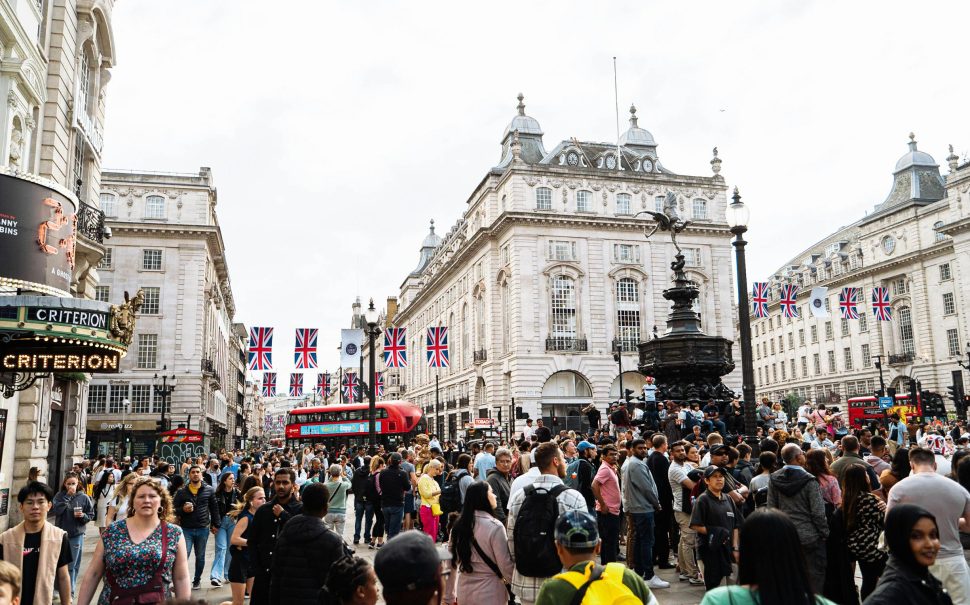Young adults feel less safe walking in London’s busiest borough compared to older walkers, a survey conducted on Westminster pedestrians has shown.
On average, pedestrians under 30 rated their walking safety at three out of five, whereas those over 30 averaged at four out of five.
Moreover, 14 participants under 30, around half the participants in that age group, had experienced a negative incident on the street in the last year, compared to only two participants over 30.
One participant, 23, said: “I just feel very conscious and vulnerable in Westminster, I can’t relax when I’m walking.”
Another participant, 22, said: “I’ve been approached aggressively so many times for money and sexually harassed.
“It makes me want to avoid walking, especially by myself.”
Incidents included personal attacks like muggings, sexual harassment, groping and verbal assault.
One participant, 21, said: “A man grabbed me by the ankle while I was standing on the street. It was a terrifying experience.”
However, incidents involving road traffic, most commonly e-bikes and cars, were also rife, as pedestrians felt that narrow pavements and overcrowding left them vulnerable to irresponsible drivers.
This issue of pedestrian safety around traffic is highlighted by Transport for London’s data.
Westminster had the highest pedestrian casualty count from road collisions of all London boroughs every year from 2017 to 2023, TFL reported in their latest data annex.
Despite declining by 30% from 2017 to 2023, Westminster’s total casualty count has been 40% higher on average each year than the borough with the second highest casualty.
The only exception to this was during the Covid-19 pandemic, when there was only a 6% difference between Westminster and Croydon.
The number of pedestrian casualties has also steadily risen after the sharp drop seen during the pandemic, with an average casualty increase of 17% each year in total pedestrian casualties.
The public response
When surveyed, pedestrians’ most common suggestions to improve the walking experience were to reduce the presence of electric bikes and create wider pavements to increase capacity.
The most common solutions pedestrians wanted differed according to age.
A third of participants under 30 suggested the implementation of wider pavements.
Other repeated answers included reducing phone snatching and a higher police presence on streets.
Pedestrians over 30, however, only had one recurring suggestion, 50% were in favour of having fewer electric bikes in Westminster.
The movement to pedestrianise the Strand
One group of young adults seeking to increase pedestrian safety in Westminster are the students of King’s College London.
A campaign began after Aalia Mahomed, a 20 year old King’s student, died on 18 March when a van crashed into a pedestrianised area on King’s Strand campus.
In response, student Tim Borgeaud started a petition, now at around 3,500 signatures, to fully pedestrianise the Strand and ensure pedestrian safety in the area.
This campaign aims to block car access to the area around St Mary-Le-Strand Church, replacing the opening bollards with fixed ones.
Currently, registered vehicles can access the Strand using the opening bollards.
KCL Student Union is supporting the campaign, and Borgeaud aims to go further than the university and collect support from campus neighbours like Somerset House and India House, before approaching Westminster Council.
They plan to meet with the University in June to present their findings and get the Vice-Chancellor and President Professor Shitij Kapur to write a letter of support so they can engage with external stakeholders.
Borgeaud said: “It would mean peace of mind for students, staff and everyone.
“It comes back to the importance of walkability and the importance of reclaiming our public spaces, for individuals rather than cars.”
The Strand area was partially pedestrianised in a 2022 project to improve traffic flow and create a more attractive public space.
However, Borgeaud argues that the town-square design and seating creates a false sense of security, as pedestrians forget that vehicles can access the area.
One person commented on the petition: “We need to prioritize student safety, protect the peers, and ensure that walkways and crossings are secure for everyone on campus.
“No one should feel unsafe just walking to class.”
Action from Westminster Council
The council introduced the ongoing Westminster Walking Strategy in 2017 with the aim to make Westminster the London borough with the highest resident walking level by 2027.
They hope that 92% of trips are made on foot by this time.
The council introduced this initiative to accommodate the growing amount of pedestrians in Westminster, as a 30% rise in visitors and 17,000 additional residents was predicted by 2027.
The strategy’s main aims included ensuring safety and accessibility for pedestrians and creating capacity for the increasing pedestrian demand by the end of the strategy.
Specific aims included allocating highway space to give pedestrians more room and identify streets with the highest collision rates to reduce pedestrian casualties.
Survey participants stated that if the council wanted to increase walking, the borough needed to prioritise pedestrians on the street and their feeling of safety.
The Strand campaign reiterated this, as Borgeaud said: “If you have better walkability, it’s a better environment, cars are not really that conducive for a modern city.
“It’s a question of what we want our spaces to be.”
Westminster Council were approached for comment.





